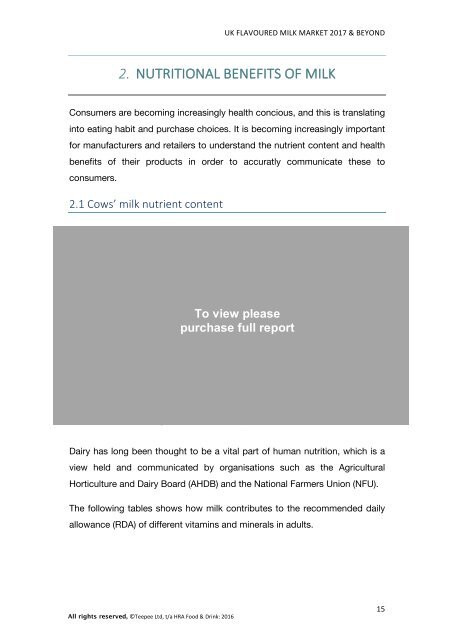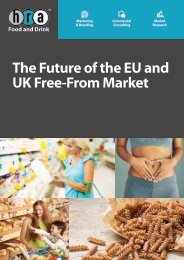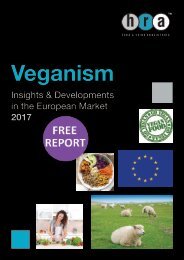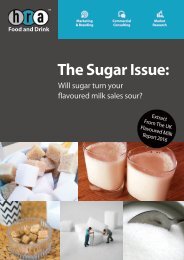Flavoured_Milk_Free
The backdrop to the UK flavoured milk market is one of relentless change. The removal of the EU milk quotas, the transition by emerging economies to a Western-style diet, the upcoming introduction of the ‘sugar tax’ and the booming sports nutrition industry are all aspects of change that create both challenges and opportunities for the UK flavoured milk market. HRA Food and Drink has developed this report as a map to guide industry stakeholders. Although volume growth in 2014 was slightly lower than in previous years, the flavoured milk market still has plenty of room for product innovation in the future.
The backdrop to the UK flavoured milk market is one of relentless change. The removal of the EU milk quotas, the transition by emerging economies to a Western-style diet, the upcoming introduction of the ‘sugar tax’ and the booming sports nutrition industry are all aspects of change that create both challenges and opportunities for the UK flavoured milk market.
HRA Food and Drink has developed this report as a map to guide industry stakeholders. Although volume growth in 2014 was slightly lower than in previous years, the flavoured milk market still has plenty of room for product innovation in the future.
You also want an ePaper? Increase the reach of your titles
YUMPU automatically turns print PDFs into web optimized ePapers that Google loves.
UK FLAVOURED MILK MARKET 2017 & BEYOND<br />
2. NUTRITIONAL BENEFITS OF MILK<br />
Consumers are becoming increasingly health concious, and this is translating<br />
into eating habit and purchase choices. It is becoming increasingly important<br />
for manufacturers and retailers to understand the nutrient content and health<br />
benefits of their products in order to accuratly communicate these to<br />
consumers.<br />
2.1 Cows’ milk nutrient content<br />
Cows’ milk is high in<br />
protein, calcium &<br />
phosphorus. This protein<br />
contains many beneficial<br />
amino acids.<br />
<strong>Milk</strong>s’ main carbohydrate is<br />
lactose, which helps<br />
assimilation of calcium,<br />
magnesium, phosphorus<br />
and vitamin A.<br />
To view please<br />
purchase full report<br />
Cows’ milk contains more<br />
saturated fat than human<br />
milk, with a high proportion<br />
of omega-9 fatty acids.<br />
<strong>Milk</strong> is a good source of<br />
calcium, zinc, copper,<br />
vitamin A & D, niacin and<br />
folate.<br />
Source: UN Food and Agriculture Association (2013)<br />
Dairy has long been thought to be a vital part of human nutrition, which is a<br />
view held and communicated by organisations such as the Agricultural<br />
Horticulture and Dairy Board (AHDB) and the National Farmers Union (NFU).<br />
The following tables shows how milk contributes to the recommended daily<br />
allowance (RDA) of different vitamins and minerals in adults.<br />
All rights reserved, ©Teepee Ltd, t/a HRA Food & Drink: 2016<br />
to 2017<br />
15







